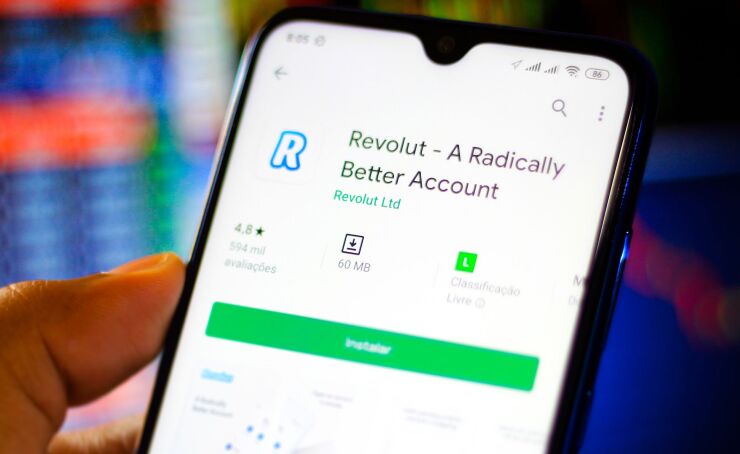Revolut is one of Europe's more prolific financial services firms, producing a steady stream of digital banking services that builds off of its original mobile payment app. But as it takes on rivals in the U.S., the London company still has to literally make a name for itself.
"Most Americans don't know our name, and fixing this will be part of the strategy," said Thibaut Genevrier, head of merchant acquiring for Revolut, who recently relocated from London to New York to help lead Revolut's U.S. expansion.
The seven year-old Revolut has had
Revolut is the second largest challenger bank in the U.K., with 5 million users, according to the

Among all of Revolut's users, 19% of iOS and Android downloads are from the U.K., the company's home market, according to
PayPal, which has about 400 million users, has a larger base in the U.S. PayPal processes about 23% of all online payments in the U.S., according to Statista, which also reports Block (formerly Square) controls about 20% of the U.S. digital payment market among merchants and PayPal controls 41% of the global payments software market. "It's vital to have name recognition and awareness. Revolut is going up against big competition like PayPal and Square that are well known in the U.S.," said NItish MIttal, a partner at Everest Group. "They'll need to make a bigger splash to get consumer attention."
Revolut's product line addresses a diverse range of financial services. It has about 20 million users who make 250 million transactions per month, according to
This week Revolut launched Shops, a service that allows consumers to buy from more than one thousand brands, including Smyths Toys, Arnotts, Amazon, Nike and Adidas. Shops, which offers cashback incentives for consumers who shop and pay inside Revolut's app and do not use buy now/pay later loans for the purchase, launched in Ireland, with plans to expand into other Revolut markets in the coming months.
Revolut in September added
Revolut Pay followed
By targeting merchants with online and in-store options, Revolut is attempting to build a "two sided" market, a necessity to compete with Square and PayPal, which both have products for consumers and businesses. And legacy payment processors such as FIS and Fiserv also support merchant-acquiring banks.
"If you only have consumers or merchants, you only have one side of the transaction," Genevrier said, adding a small-business approach will expand Revolut's exposure in communities, making it more visible to shoppers as a payment option. "It's important for us to have a relationship with the 'merchant next door.'"
The merchant-facing products come as Revolut adds more consumer services that target different demographics, such as
As people download these products, they will associate Revolut with a wider range of money management services, according to Genevrier, who said part of Revolut's strategy would also be removing costs for merchants and consumers through lower fees and centralizing financial services in a single app.
"It's not just payments as part of our business, it also increases visibility," Genevrier said. "It's important for people to see the name 'Revolut' in their daily lives." Revolut officially launched in the U.S. in 2020, and has
"We are working on obtaining a license on the banking side," Genevrier said. "But there is no big hurdle. The timing of moving into the U.S is a business decision … focused on when it's the right time to invest." Other payment firms are expanding payment technology, mostly targeted at filling gaps in merchant services in digital and in-store environments to support omnichannel shopping and payments.
"They're looking to have more products, diversifying their digital wallet," Mittal said. "In some ways it's like the Alipay or WeChat Pay concept in Asia and China, having one app that does many things."






